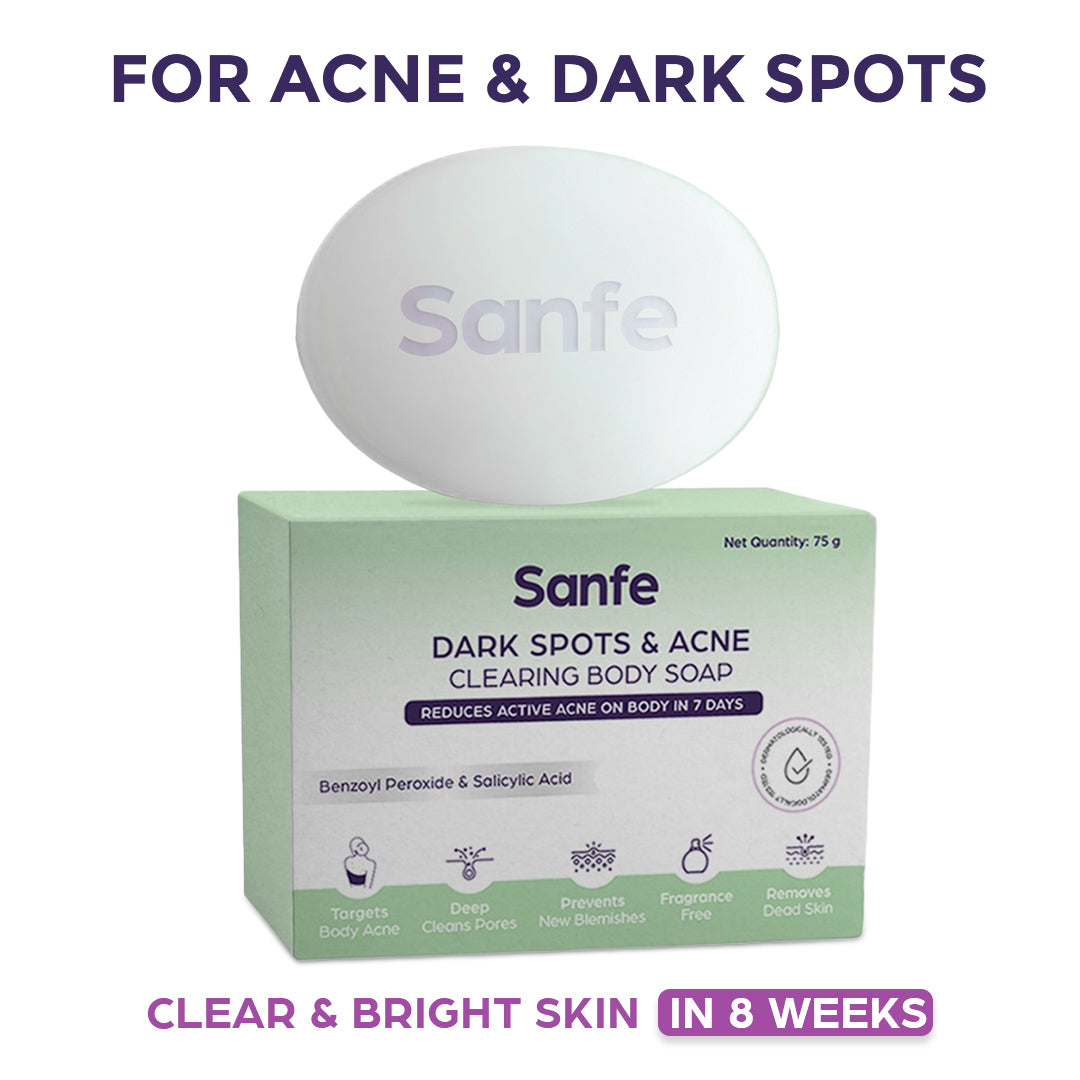“I got my periods!”
“Me too!”
*Giggles*
It’s a cute sight and a reassuring feeling to find your cycle synced with your friend or sister – painful, but okay – you’re in this together.
Now, imagine your cramps hurting so bad that you are literally chained to your bed, while your friend goes about delivering presentations and winning clients. Yes, she too is in pain, but it’s bearable and almost non-existent after she applies Feminine Cramp Relief Roll on. You pop a pill, cling to your hot pack, and roll in your bed with pillows believing that your pain tolerance threshold is way lower than hers.
Well sis, tweezing your eyebrows is a test for pain tolerance threshold, not period cramps!
Not all period cramps are equal. A pain that disrupts your life even after taking pain meds, using a hot pack, and applying Sanfe Roll on, indicates that there is something fishy going down there.
So, let’s discuss the “red flags” of periods and cramping. Brace yourself.
Dull, constant pain outside of your menstrual cycle
That pain with vaginal discharge might indicate a serious infection of the reproductive system and is termed as Pelvic Inflammatory Disorder (PID). The cause of infection is often an untreated STD. Good news is that PID is totally curable. So, don’t delay the treatment as it may scar your reproductive tract and mess with your fertility.
What’s next: A visit to your doctor for a swab culture. The culture will assess the kind of infection and help identify the right mix of antibiotics for treatment.
Note: Google your condition, but do not buy internet-suggested meds for PID as your condition might be different.
Cramps that no meds can defeat
Most of us dismiss this “excruciating” pain as a “normal” part of periods or blame it on their low pain tolerance. However, the culprit behind the failure of all meds and measures is often Endometriosis or tissue growth on reproductive organs.
What’s next: Hormone therapy is quite effective in this case. It can recalibrate your periods by decreasing the number of days and the amount of pain you experience.
Heavy flow meets agonising cramps
This might be a case of Uterine Fibroids. Don’t be spooked – it’s quite common in women and mostly, non-threatening. Fibroids are tissue growth on the uterine wall, which intensify bleeding and cramping. If you have a family history of fibroids, you should see your doctor immediately.
What’s next: The doctor will ask you to get an ultrasound scan done to ensure that there is no abnormal growth. You might be prescribed low-dose birth control pills for pain management. In the case of worrisome growth, you might have to undergo surgery which will relieve you of your pain and heavy flow.
Note: Never take birth control pills without discussing with your doctor.
The one-sided pain that stabs like a spear
The cause behind such a sharp, shooting pain could be a twisted ovary (torsion) or a ruptured cyst in the ovary. Cysts are quite common and usually not a serious concern until they rupture. This is the one where you say, “Bloody hell!” and sprint to the ER.
What’s next: Some medical scans to determine the cause of pain, cyst or torsion, and a surgery to fix the condition.
Major cramps after IUD implantation
IUD or Intra-Uterine Device is a foreign object in your system, and so, you’re bound to experience some mild cramping initially. However, severe pain or pain that lasts more than a week could indicate dislodgement of the IUD.
What’s next: Visit your doctor for a pelvic exam and an ultrasound to make sure the device hasn’t migrated. If it has, the doctor will reposition it, and your pain would be gone.
Cramping without periods
This could mean two things – an ectopic pregnancy (a pregnancy that is not in uterus) or a miscarriage, depending on your physical activity during that time. None of those is uncommon but needs immediate medical attention.
What’s next: Take a pregnancy test. A negative result would rule out a pregnancy-related issue. However, if the test is positive, rush to the ER as both the conditions can turn into life-threatening emergencies.
Also check out our article on continued cramping after your periods.

Over to you
It’s a good practice to keep a log of your menstrual cycle, not just the dates, but also pain levels, emotions, sleep, energy levels, etc. So, when something doesn’t feel right, you don’t have to rely on your memory and can bring complete information to your doctor.
At Sanfe, we’re continually working towards developing better solutions for women’s everyday issues. While the formulation of our Cramp Relief Roll-On offers relief to many women, it may not work on extreme cases like the ones discussed in this article; and for a good reason. These conditions need medical attention. So, if you’re someone whom our product couldn’t help, we suggest visiting your doctor before reaching for an OTC pain killer.
On that note, stay safe, stay pain-free.








